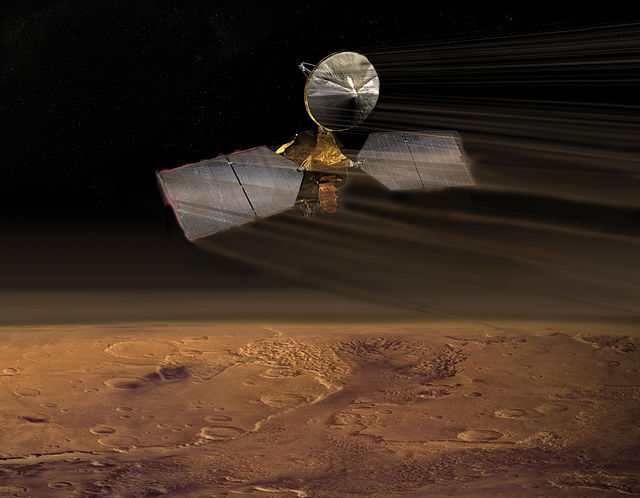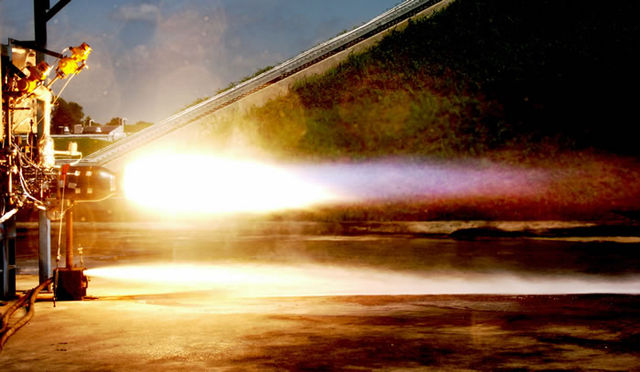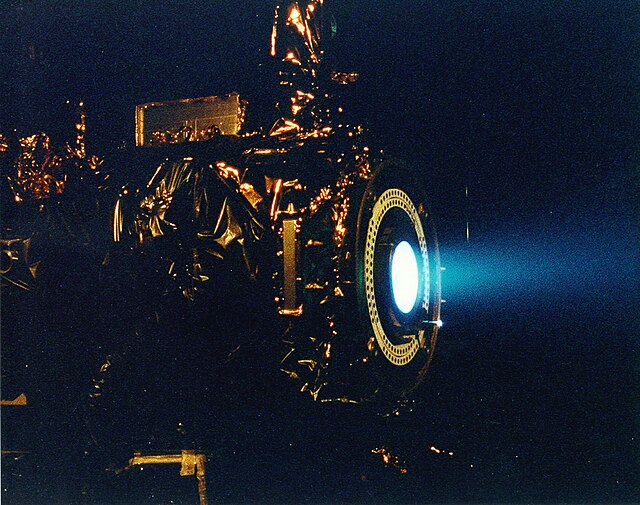Aerobraking is a spaceflight maneuver that reduces the high point of an elliptical orbit (apoapsis) by flying the vehicle through the atmosphere at the low point of the orbit (periapsis). The resulting drag slows the spacecraft. Aerobraking is used when a spacecraft requires a low orbit after arriving at a body with an atmosphere, as it requires less fuel than using propulsion to slow down.
An artist's conception of aerobraking with the Mars Reconnaissance Orbiter
An F-22 Raptor landing at Elmendorf AFB, demonstrating aerodynamic braking.
Aerodynamic braking in Space Shuttle landings.
Spacecraft propulsion is any method used to accelerate spacecraft and artificial satellites. In-space propulsion exclusively deals with propulsion systems used in the vacuum of space and should not be confused with space launch or atmospheric entry.
A remote camera captures a close-up view of an RS-25 during a test firing at the John C. Stennis Space Center in Hancock County, Mississippi.
SpaceX's Kestrel engine is tested.
NASA's 2.3 kW NSTAR ion thruster for the Deep Space 1 spacecraft during a hot fire test at the Jet Propulsion Laboratory
6 kW Hall thruster in operation at the NASA Jet Propulsion Laboratory







